5 Butterfly Garden Planting Recipes – For Pretty Pots And Borders That Nurture Wildlife
Create a pollinator paradise in your garden with these perfect planting recipes. Use plants individually or mix-and-match combinations to stunning effect.


When butterflies start flitting about in spring, their quick movements and glittering wings go a long way in helping everyone to acclimate to the new season. The members of the Lepidoptera family are plentiful in North America, with more than 700 species of butterflies and 12,000 species of moths. All of them are on the hunt for nectar and a leafy plant on which to mate and lay their eggs.
Attracting butterflies to the garden is an important way gardeners can support these dainty insects. Many butterflies and moths are experiencing population pressures as open fields and their preferred – and for some, required – food and butterfly host plants are disappearing. This makes home gardens and public plantings critical for their survival.
It’s a good thing that many butterflies and moths have a wide range of plants – from trees and shrubs to annuals and perennials – that they can partake in to feed and nurture them.
Below we have provided five planting recipes for garden beds and pots that will get you on your way to providing food and egg-laying sites for butterflies and moths.
Before planting, be sure to select only varieties that are suited to your USDA hardiness zone. Assess that these new garden plants are appropriate for your existing light, soil and moisture conditions, as well.
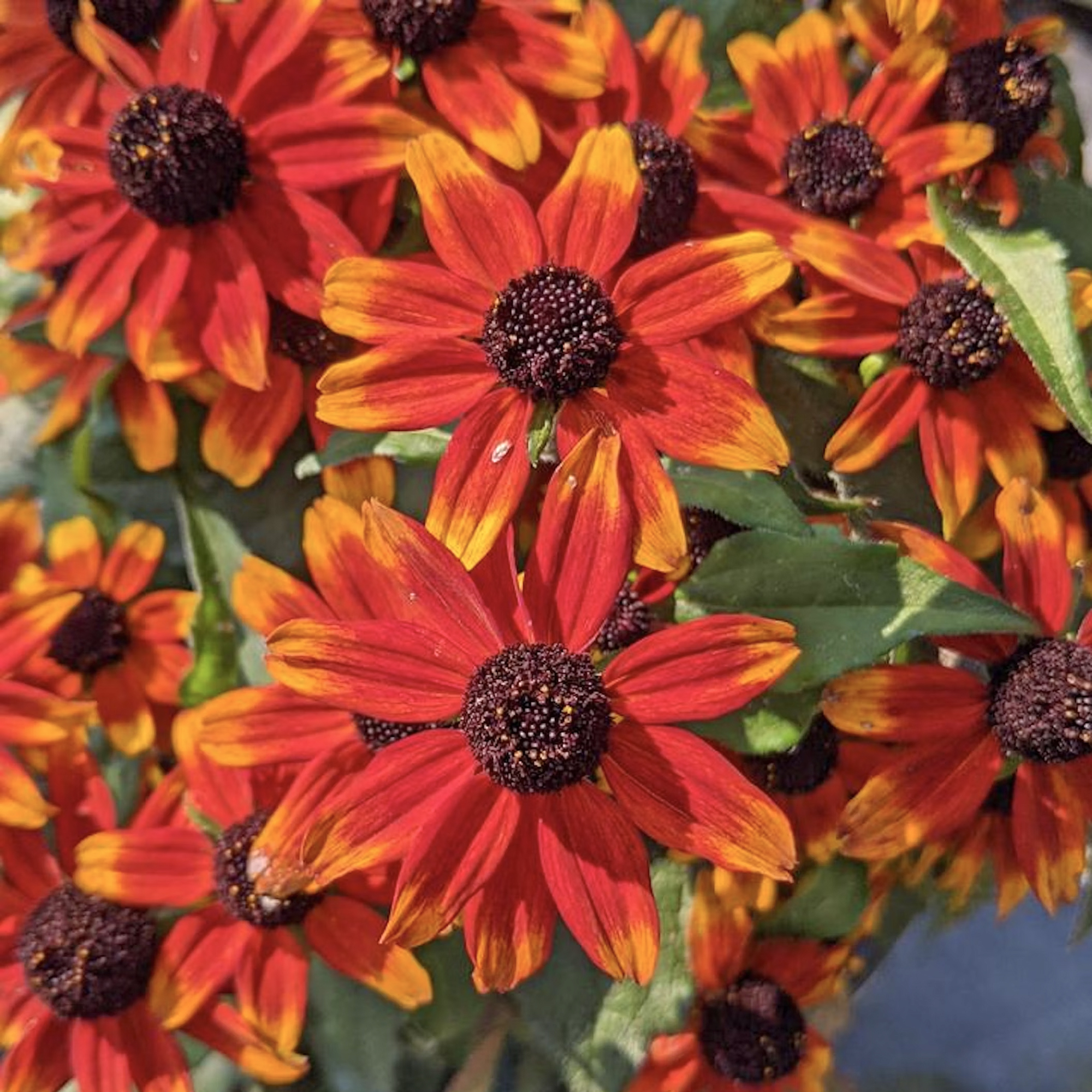
Discover stunning plants that will help these precious pollinators survive the cold weather, as well as butterfly host plants, and seeds that can be planted in fall to help them thrive next summer.
1. Annuals Butterflies Adore

Lots of annual flowers are beloved by butterflies. Pot them in containers along your porch or balcony to watch the pollinators flutter by.
- Zinnia (Zinnia elegans)
Butterflies love to land on zinnias’ flat, broad flowers. They come in a rainbow of colors and heights from less than a foot to more than 3 feet tall. Use the small-sized varieties in pots around your patio. USDA Zones 2-11. - Salvia (Salvia hybrid sp.)
The annual form of salvia is a butterfly magnet. Spikes of blue to purple flowers rise above gray-green foliage to about 2 to 3 feet. It's stunning planted in groups and its color accentuates pottery. USDA Zones 9-11. - Lantana (Lantana camara)
This heat-loving annual explodes with umbels formed from nectar-rich tubular flowers. Often bicolored in tropical shades, use lantana as a “filler” in combo containers. USDA Zones 8-11. - Sweet Alyssum (Lobularia maritima)
This low-growing, cool-season annual is a butterfly favorite for pollinators. In a range of whites, purples, and pinks, its fragrance is delightful. Use as a “spiller” in combination containers. USDA Zones9-11. - Marigold (Tagetes sp.)
Marigolds come in a range of heights and flower sizes. All of them set a container aflame with yellow, light and dark orange and maroon highlights. USDA Zones 2-7.
2. Colorful Native Perennials for Late-Summer Visitors

Butterflies are attracted to the bright colors of pink, orange, yellow, and purple. Luckily there are plenty of late-summer blooming native perennial plants to meet those color preferences.
Gardening tips, videos, info and more delivered right to your inbox!
Sign up for the Gardening Know How newsletter today and receive a free copy of our e-book "How to Grow Delicious Tomatoes".
- Bee Balm (Monarda spp.)
More than just for bees, butterflies love native monarda. Cultivated varieties are available in a range of butterfly-attracting colors. This 4-foot-tall perennial is also fragrant. USDA zones 4-9. - Common Milkweed (Asclepias syriaca)
The native milkweed serves both adult butterflies and their caterpillars, the former as an egg host and the latter as a food source. Its soft-purple flowers are delightfully fragrant. USDA zones 3-9. - Garden Phlox ‘Jeana’(Phlox paniculata ‘Jeana’)
This phlox is a magnet for swallowtail butterflies, skippers, hummingbirds, and sphinx moths. It also resists disease, which many phlox succumb to by summer’s end. USDA zones 4-8. - Yarrow (Achillea millefolium)
A naturalized native, yarrow is a must-visit for passing butterflies. Cultivated varieties are available in several colors including bright yellow and vibrant red. USDA zones 3-9. - Joe-Pye Weed (Eutrochium spp.)
This native perennial is a tall, purple-topped plant that loads of different butterflies and their caterpillars adore for sustenance. Its best feature is that it blooms from midsummer straight through fall. USDA zones 3-10.
3. Edibles for Butterflies and You

You might be surprised to learn that butterflies are attracted to many different edible plants, including herbs. Your kitchen garden is doing double duty feeding you and the winged pollinators.
- Chives (Allium schoenoprasum)
Blooming in spring, the purple round pom-poms of chives are an unexpected butterfly magnet, not to mention all other sorts of pollinators. Bonus: they repel aphids in your garden, too. USDA zones 3-9. - Fennel (Foeniculum vulgare)
Beloved by black swallowtails, this herb is also a gorgeous garden plant with its frilly fronds and strong licorice fragrance. USDA zones 4-9. - Dill (Anethum graveolens)
Closely related to parsley, dill is another favorite of black swallowtail butterflies and will often host their chrysalises. It’s a super seeder, so expect it in your garden in subsequent years. USDA zones 9-11 - Thyme (Thymus vulgaris)
The thyme plant is a low-growing aromatic perennial herb. Butterflies and bees are frequent visitors. Add sprigs to sautéing mushrooms! USDA zones 2-10. - Parsley (Petroselinum crispum)
Easy-to-grow parsley is renowned for attracting black swallowtail butterflies and other pollinators. As a biennial, it can overwinter into spring and is a great component for soups, stews, and seafood. USDA zones 4-9.
4. Nurturing the Monarchs
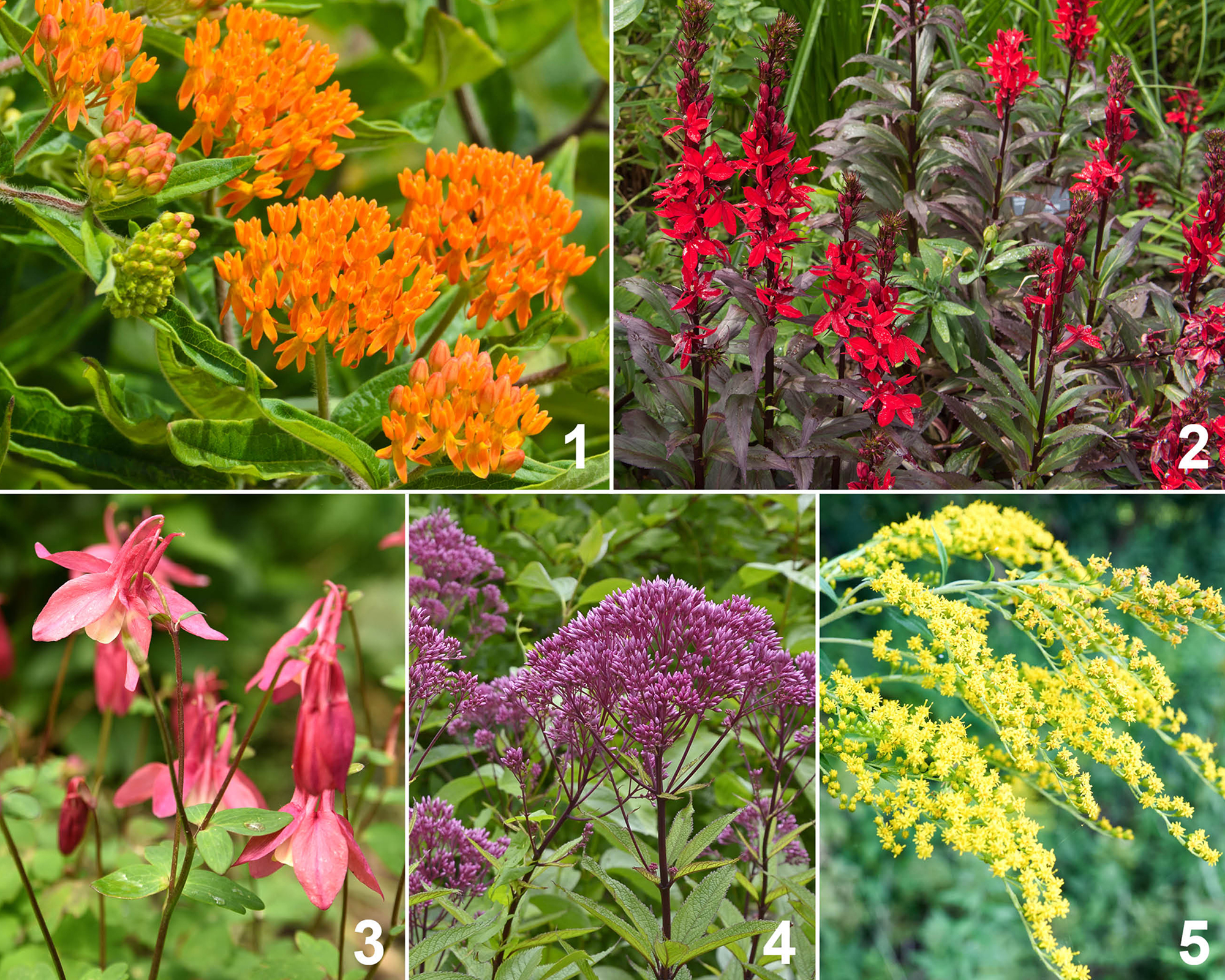
Each year monarch butterflies fly to and from northern North America and Central Mexico – the only butterfly to undertake a strenuous two-way migration. Attract monarch butterflies to your garden and support their energy needs with a specially designed planting kit.
The Medium-Sized Monarch Garden Kit, available in the Gardening Know How Shop, is fit for a 5-foot by 8-foot garden. The kit comes includes a planting plan, fabric planting map, and plants that will attract and sustain monarch butterflies. Combined, these plants provide a long bloom time for the butterflies and a beautiful garden for you. All plants are suitable for USDA zones 5-8.
- Butterfly Milkweed (Asclepias tuberosa)
This plant brings a great pop of orange color in late summer. It’s a tough plant, drought tolerant, and is especially beloved by monarchs as they migrate in late summer. - Cardinal Flower (Lobelia cardinalis)
While mostly pollinated by hummingbirds, we’ve added the cardinal flower for its striking touch of red. - Columbine 'Little Lanterns' (Aquilegia canadensis)
The deep-throated, bright red and yellow flowers nod downward beginning in late spring. Grow to just 10 inches and use little water. - 'Little Joe' Joe Pye Weed (Eupatorium dubium)
This dwarf-cultivated variety of Joe Pye weed grows in a cluster to just 2 ½ feet tall. Its flowers are a deeper purple than the species form, but just as attractive to butterflies. - Goldenrod 'Fireworks' (Solidago rugosa)
This bright yellow goldenrod has sprays of flowers that are much finer than the species form. Its bursts of blooms are full of nourishing nectar.
A second planting set, the Native Pollinator+ Garden Kit, with bee balm, blue false indigo, and two types of coneflowers, is suitable for monarch butterflies, and a host of other pollinators as well.
5. Moths Need Nectar, Too
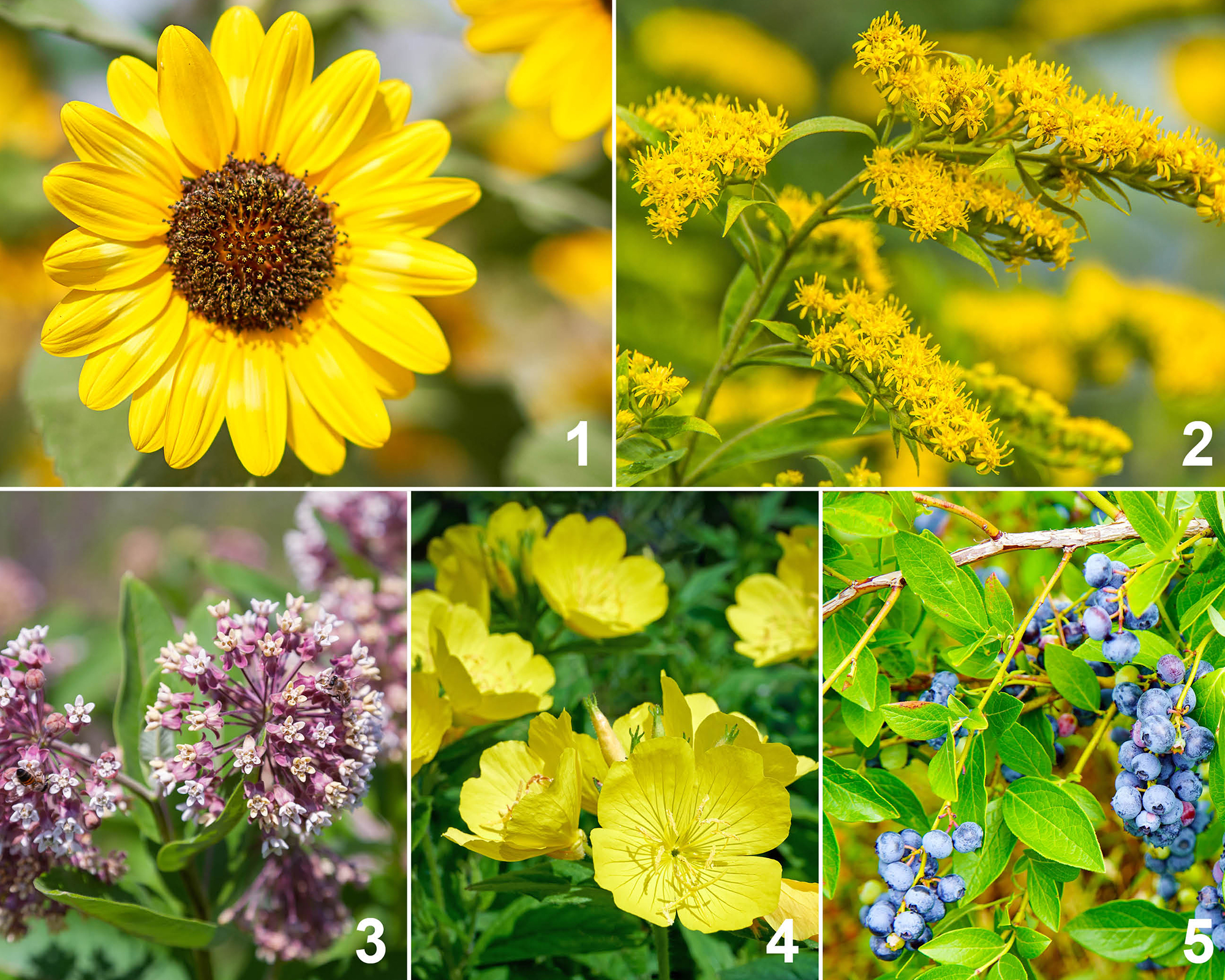
Moths outnumber butterflies 10 to 1, and their caterpillars are vital food for birds and bats. We tend not to notice them since they are most active in the evening. Attract moths to your garden with flowers that are light-colored and easily spotted at night.
- Native sunflowers (Helianthus spp.)
Sunflowers are an important source of nectar for moths. In fact, sunflowers support more than 120 different species, including the banded sunflower moth. USDA zones 3-9. - Goldenrod (Solidago spp.)
Goldenrods support more than 75 species of Lepidoptera and are hosts to specialist moths such as the goldenrod flower moth. And no, it’s not the plant you are allergic to each fall (that would be ragweed). USDA zones 3-8. - Milkweeds (Asclepias spp.)
Milkweeds are not just for monarchs! They also host several moth species, including the milkweed tussock moth, whose caterpillar looks hairy and scary but is quite harmless. USDA zones 3-9. - Evening Primrose (Oenothera biennis)
A lemon-colored night bloomer, evening primrose is a tall and slim biennial, meaning it completes its life cycle in two years. The colorful primrose cochylid moth and red-streaked momfa are primrose-specific moths. USDA zones 4-9. - High-Bush Blueberry (Vaccinium corymbosum)
Blueberry bushes are visited for their nectar by more than 200 species of butterflies and moths, including the giant silk moth. They also benefit woodland birds and animals (and us!) with their delicious fruit. USDA zones 3-8.
This article features products available from third-party vendors on the Gardening Know How Shop.

Ellen Wells is a horticultural communications consultant with 30 years of experience writing about all aspects of the gardening world.
She has worked for many of horticulture’s biggest brand names, writing blog posts, articles, press releases, and design and instructional pieces. Her previous roles include Senior Editor and Editor-at-Large for Ball Publishing.
Ellen is based in New England where she gardens in Zone 7a. She loves tending to flower-filled containers on the patio and puttering around her vegetable garden.
-
 Looking For Plants To Give You The Soft And Fuzzies? Try These 5 Fuzzy Leaf Plant Options
Looking For Plants To Give You The Soft And Fuzzies? Try These 5 Fuzzy Leaf Plant OptionsLovers of texture, drama, silver foliage and tactile plants will adore these special sensory garden additions. These fuzzy leaf plant options will leave you all aglow
By Susan Albert
-
 Get Ready For A Summer Of Hummers! Grow These Full Sun Hummingbird Plants and Flowers
Get Ready For A Summer Of Hummers! Grow These Full Sun Hummingbird Plants and FlowersIf you’re lucky enough to enjoy a sunny backyard, make sure you are maxing out on your pollinator opportunities and grow these full sun hummingbird plants and flowers
By Tonya Barnett
-
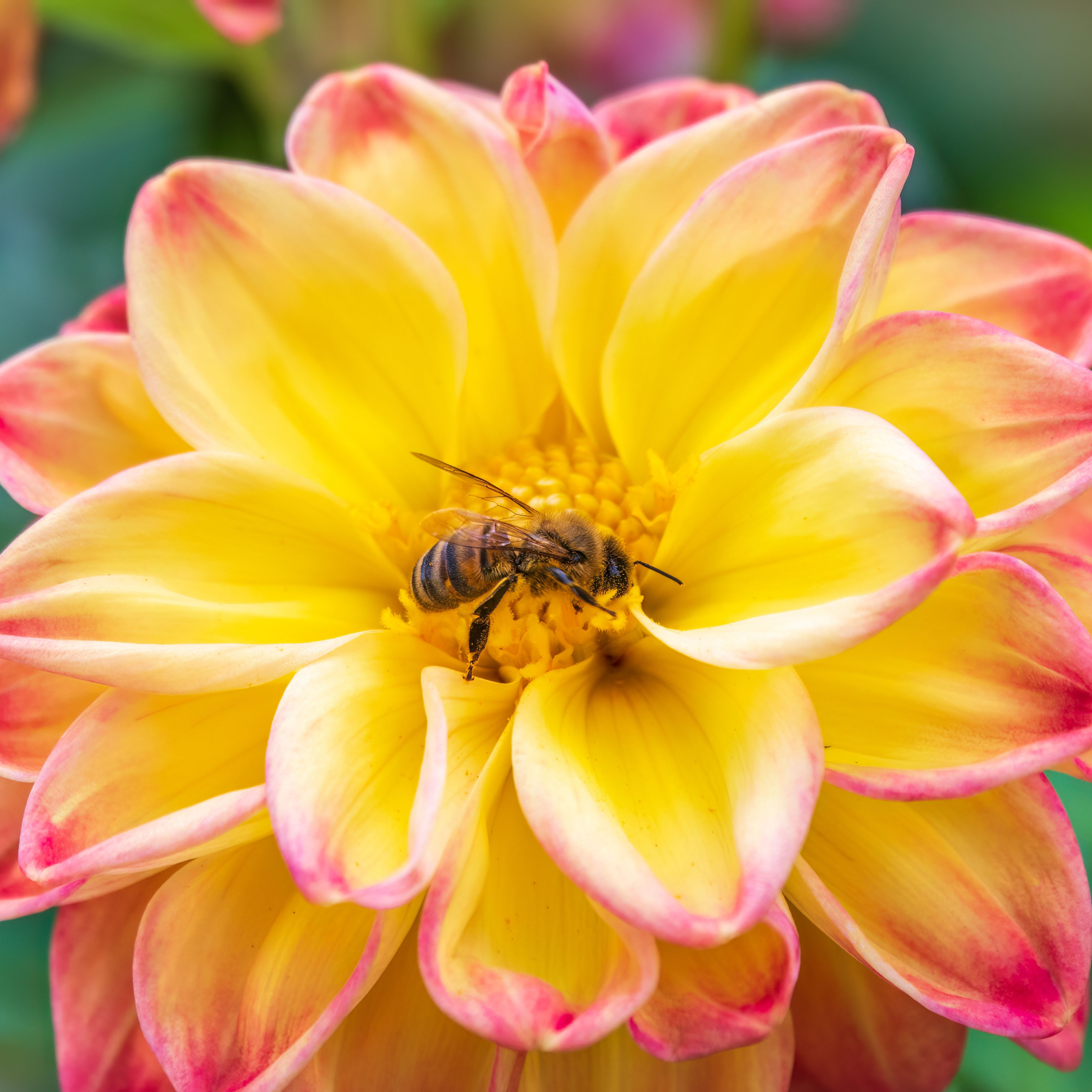 Attract More Pollinators: 8 Best Nectar-Producing Plants For Honey Bees And Other Pollinators
Attract More Pollinators: 8 Best Nectar-Producing Plants For Honey Bees And Other PollinatorsWant to know the core plants you can grow to add beauty while helping beneficial garden friends? Discover the best nectar-producing plants for honey bees and other pollinators
By Tonya Barnett
-
 8 Flower Seeds To Sow In Fall That Are Butterfly Magnets: Plant A Beautiful Pollinator Oasis
8 Flower Seeds To Sow In Fall That Are Butterfly Magnets: Plant A Beautiful Pollinator OasisCreate a vibrant butterfly sanctuary by planting fall seeds that attract and support precious pollinators.
By Melanie Griffiths
-
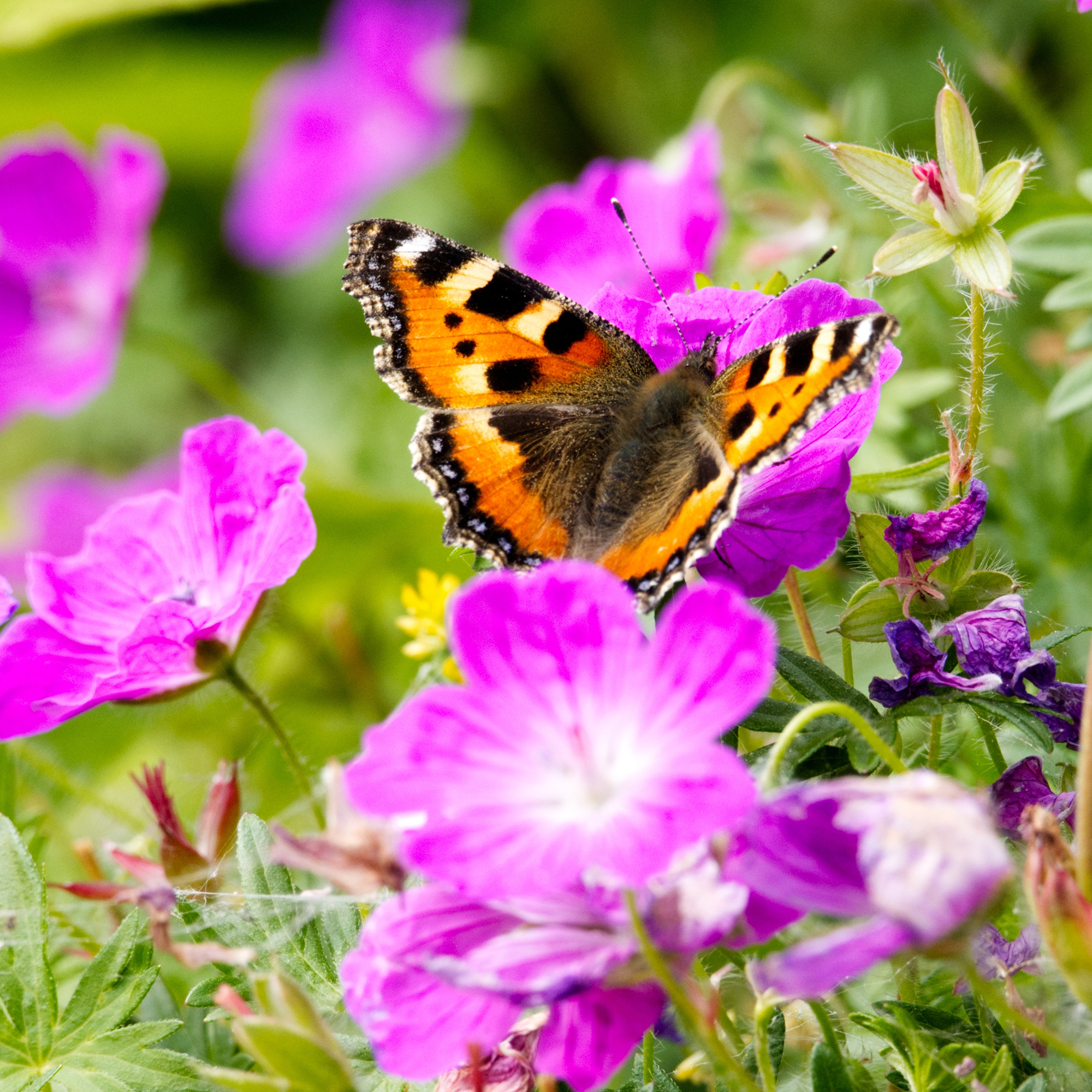 7 Plants That Mosquitoes Hate But Butterflies Love – It’s Win, Win
7 Plants That Mosquitoes Hate But Butterflies Love – It’s Win, WinFill your garden with multitasking plants that ward off pesky mosquitos with their aromatic scent, while attracting precious pollinators with beautiful flowers.
By Mary Ellen Ellis
-
 8 Butterfly Host Plants That Are Beautiful And Low-Maintenance
8 Butterfly Host Plants That Are Beautiful And Low-MaintenanceDiscover the most attractive butterfly host plants to include in your garden and nurture local wildlife. As an added benefit, they are also easy to look after.
By Melanie Griffiths
-
 Attract More Monarchs: 8 Best Flowers For Monarch Butterflies
Attract More Monarchs: 8 Best Flowers For Monarch ButterfliesCreating a floral haven for pollinators is one of life’s joys – and monarchs are some of the most precious. Here are the best flowers for monarch butterflies
By Tonya Barnett
-
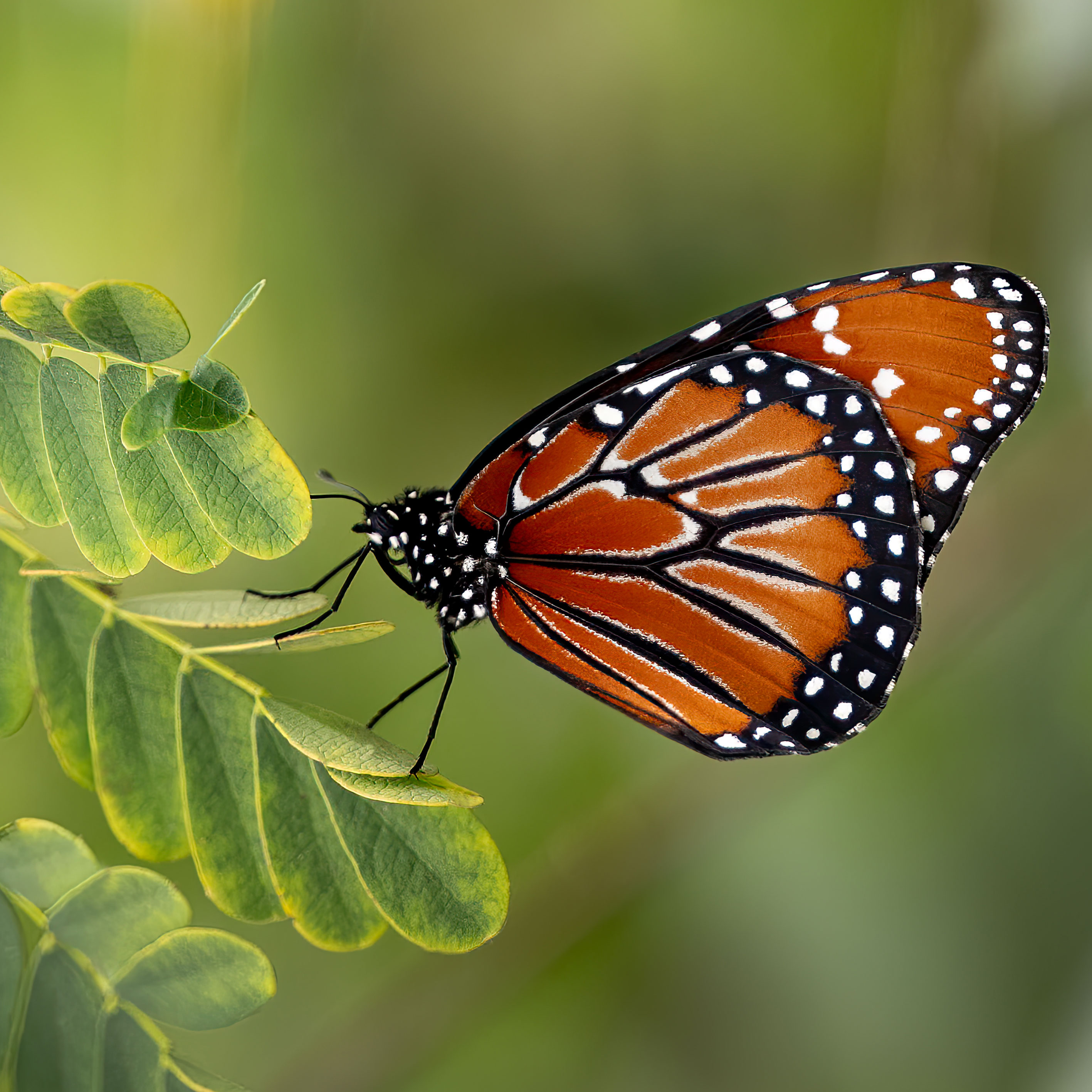 Looking For Host Plants To Attract Butterflies? Try These 6 Plants For Butterfly Eggs
Looking For Host Plants To Attract Butterflies? Try These 6 Plants For Butterfly EggsWhile it’s important to create a rich source of nectar for pollinators, it’s also critical to provide safe places to breed and grow. Try these plants for butterfly eggs to bring more pollinators to your yard
By Mary Ellen Ellis
-
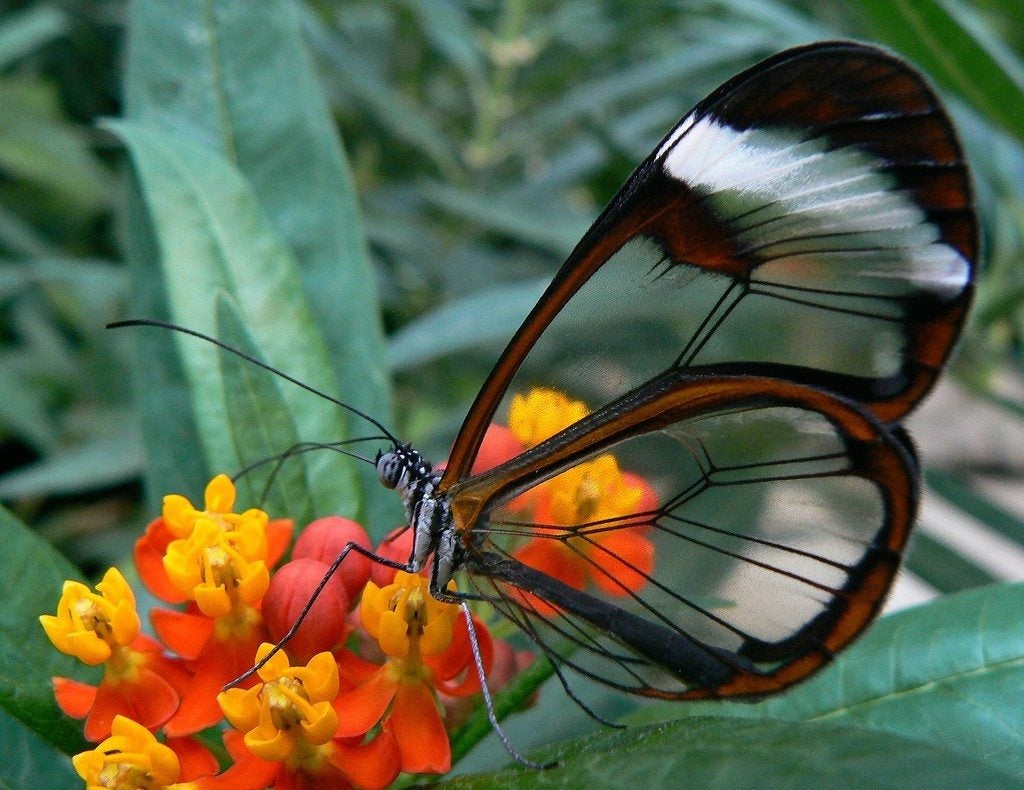 Butterfly Garden Design: Tips For Attracting Butterflies In Gardens
Butterfly Garden Design: Tips For Attracting Butterflies In GardensAttracting butterflies in gardens is easy to do with the right flowering plants. Read this article for information on how to attract butterflies to your garden. Click here to learn more.
By Arista Hageman